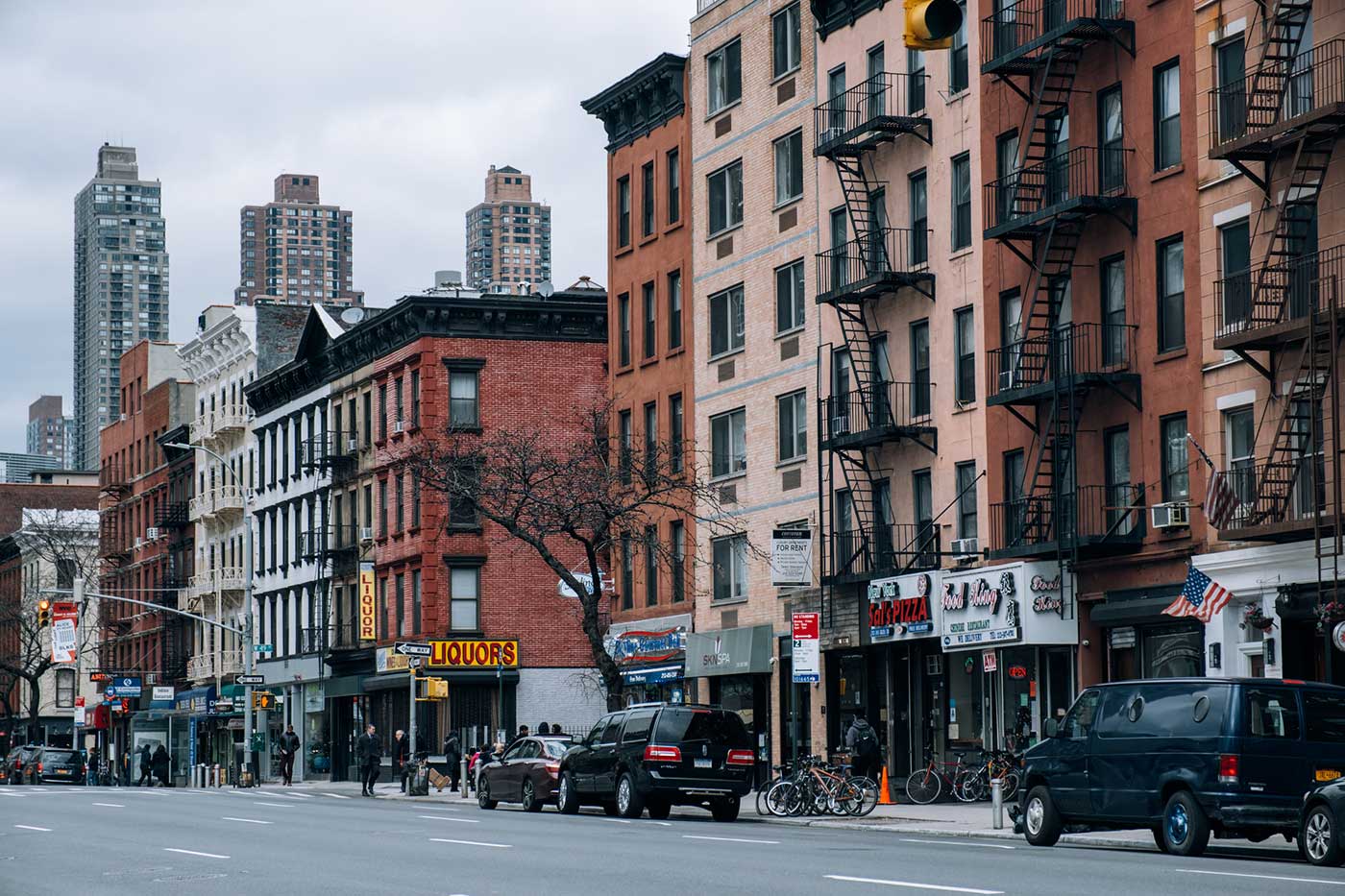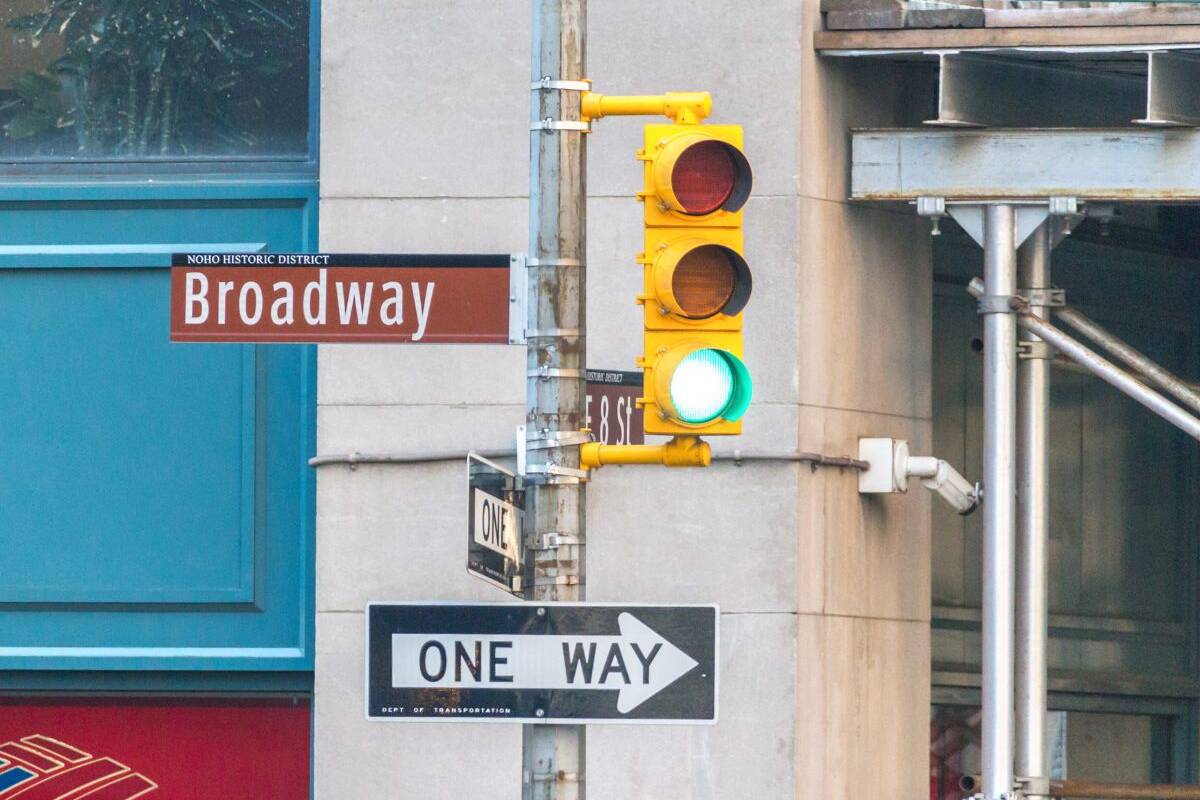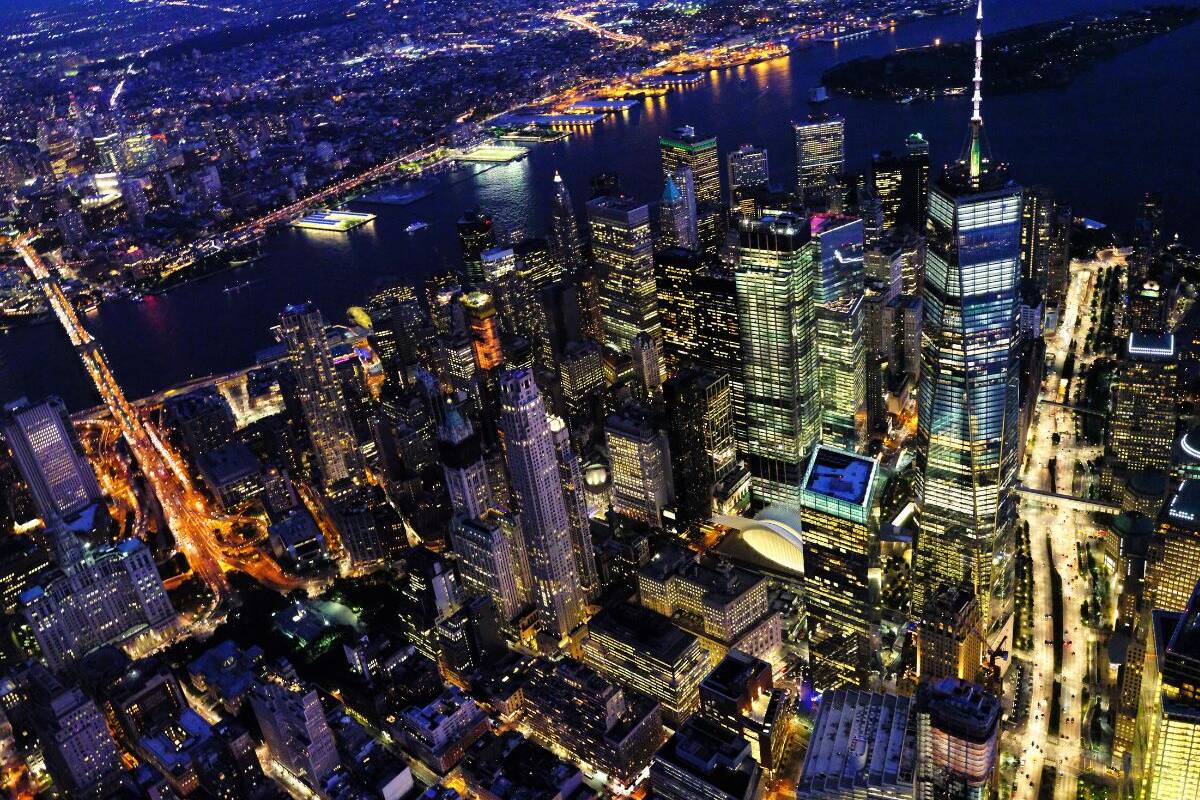The Rockefeller Center stands as an iconic complex in the heart of New York City, captivating millions of visitors annually. So what makes the Rockefeller Center so famous? This question has intrigued many, and this comprehensive guide aims to unravel the various elements that contribute to its renowned status.
Table of Contents
Introduction
In the bustling metropolis of Manhattan, surrounded by towering skyscrapers and vibrant streets, Rockefeller Center emerges as a symbol of American ambition, resilience, and innovation. This 22-acre complex represents more than just an assemblage of buildings; it embodies the essence of New York City itself.
From its distinctive Art Deco architecture to the world-famous Christmas tree, Rockefeller Center has become a cultural touchstone. It’s a place where history, art, commerce, and entertainment converge to create something truly extraordinary. This article explores the multifaceted aspects that make Rockefeller Center a landmark of global significance.
Historical Background

Conception and Planning (1928-1930)
The late 1920s marked the inception of Rockefeller Center. During this period of economic prosperity, John D. Rockefeller Jr. envisioned an ambitious project that would reshape Midtown Manhattan’s landscape. Initially conceived as a new home for the Metropolitan Opera, the project’s scope would soon evolve dramatically.
Construction During the Great Depression (1931-1939)
Its construction during one of the most challenging economic periods in American history certainly contributes to its legendary status. As the stock market crashed in 1929, plunging the country into the Great Depression, Rockefeller made the bold decision to proceed with the project.
Construction commenced in 1931, providing employment for thousands of workers during this economically turbulent time. Over the next eight years, 14 Art Deco buildings would rise from the ground, transforming the cityscape and serving as a beacon of hope and progress.
Post-World War II Expansion (1940s-1970s)
Following World War II, Rockefeller Center continued to evolve and expand. The complex incorporated new buildings, embracing the sleek International Style popular in the post-war era. By the 1970s, Rockefeller Center had grown to encompass 19 buildings, covering an impressive 22 acres of prime Manhattan real estate.
Architectural Marvels
Art Deco Design and Limestone Facades
The stunning architecture plays a significant role in making the Rockefeller Center famous. The original buildings exemplify the Art Deco style, characterized by bold geometric forms and decorative details. A unifying feature of the complex is the use of Indiana limestone for the facades. Over 14 million cubic feet of limestone was used, creating a cohesive and visually striking ensemble.
Skyscrapers and Notable Buildings
30 Rockefeller Plaza (Comcast Building)
The centerpiece of the complex is 30 Rockefeller Plaza, also known as the Comcast Building (formerly the RCA Building and later the GE Building). Standing at 850 feet tall with 70 floors, this skyscraper has become one of the most recognizable in New York City’s skyline.
Radio City Music Hall
Radio City Music Hall, an Art Deco masterpiece, opened in 1932. With its distinctive marquee and lavish interior, it stands as a testament to the golden age of entertainment. Notably, it holds the title of the largest indoor theater in the world, with a seating capacity of 6,000.
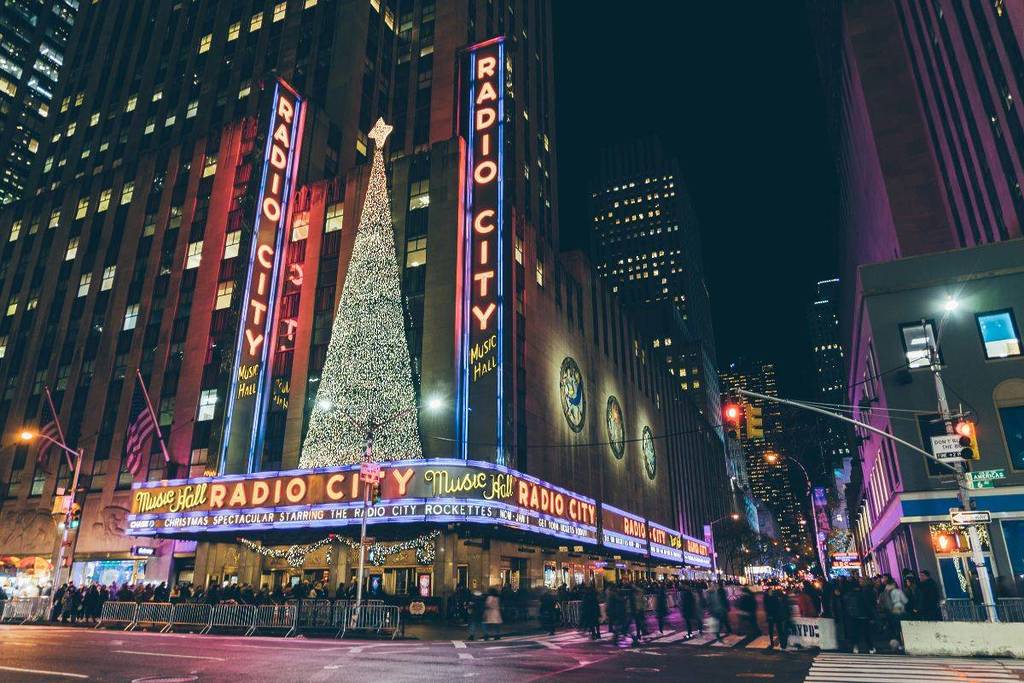
International Building
The International Building, centrally located within the complex, is another key component of the Rockefeller Center ensemble. It’s flanked by four smaller buildings that were originally intended to house foreign-based tenants, reflecting the “international” theme.
Urban Planning and Layout
Its innovative urban planning is certainly a contributing factor. The complex was designed as a “city within a city,” with a layout that promotes pedestrian flow and creates a sense of openness amidst the dense urban environment.
Rooftop Gardens
A lesser-known feature of Rockefeller Center is its rooftop gardens. Part of the original design, these green spaces were intended to provide a natural respite within the urban landscape. While not all are accessible to the public, they contribute to the complex’s sustainability and add a touch of greenery to the skyline.
Iconic Public Spaces
Rockefeller Plaza
Rockefeller Plaza serves as the heart of the complex. This pedestrian street runs through the center, providing access to various buildings and creating a vibrant public space. It’s here that many of the features that make Rockefeller Center famous can be found.
Channel Gardens
The Channel Gardens, a promenade leading from Fifth Avenue to the central plaza, offer seasonal beauty. In spring, it’s adorned with colorful flowers, while winter brings festive decorations and twinkling lights.
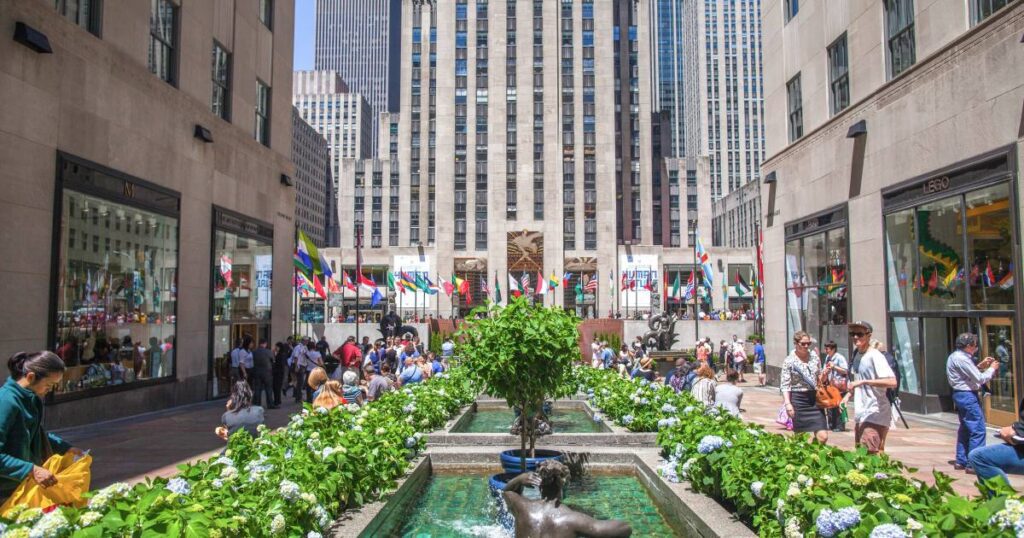
Lower Plaza
The sunken Lower Plaza is a hub of activity. In winter, it transforms into the famous ice skating rink, and during the holiday season, it hosts the enormous Rockefeller Center Christmas Tree. The iconic image of skaters gliding beneath the golden Prometheus statue is certainly one reason.
Underground Concourse
An extensive underground concourse connects all the buildings in the complex. This subterranean level houses numerous retail outlets and eateries, providing a convenient way to navigate the area, especially during inclement weather.
Famous Attractions
Ice Skating Rink
The ice skating rink, opened in 1936, has become one of the most famous in the world. Annually, approximately 150,000 people enjoy skating in this iconic setting.
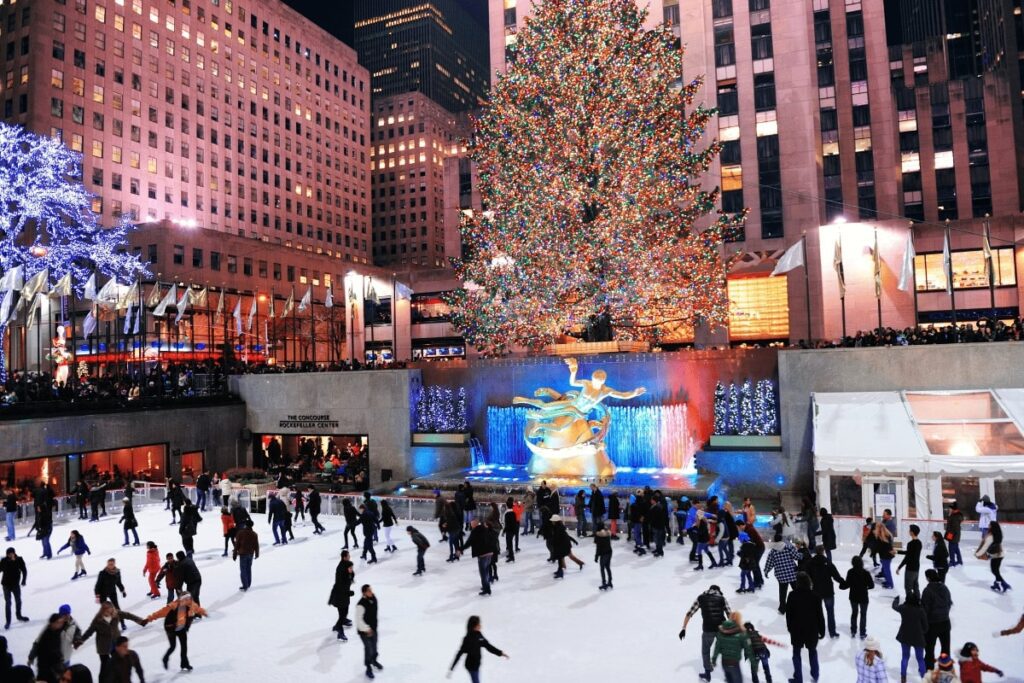
Rockefeller Center Christmas Tree
Rockefeller Center | What Makes It Famous? The annual Christmas tree certainly contributes to its renown. This tradition began in 1933 with a modest 20-foot tree erected by construction workers. Today, the tree is typically a Norway Spruce standing over 70 feet tall and adorned with over 50,000 LED lights. The annual tree lighting ceremony has become a significant event, attracting thousands of spectators and millions of TV viewers.
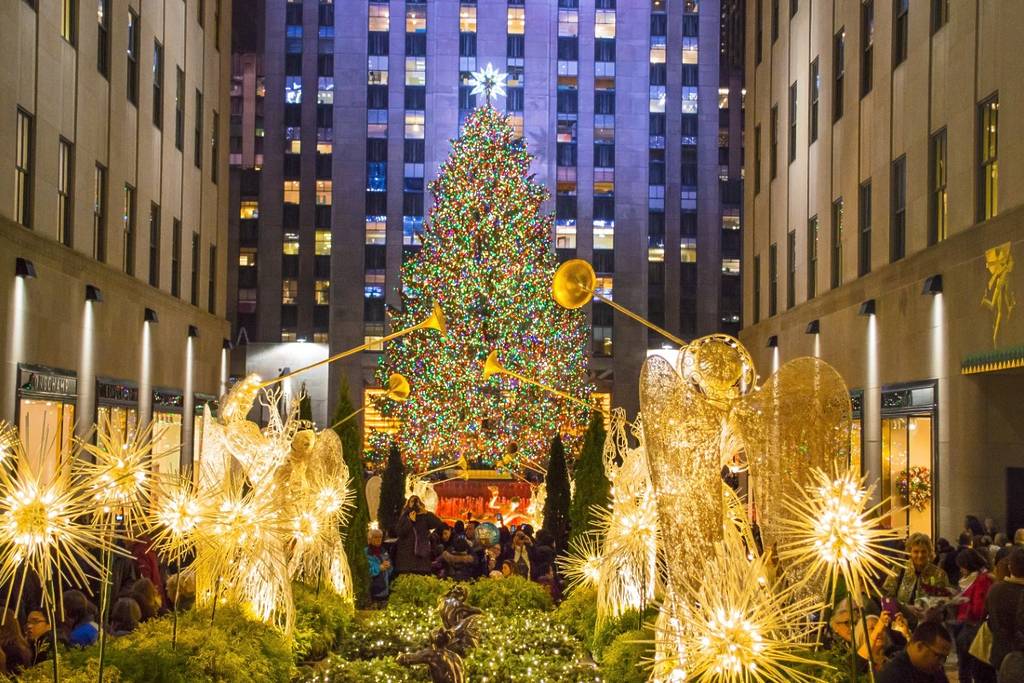
Top of the Rock Observation Deck
The Top of the Rock Observation Deck, located on the 67th, 69th, and 70th floors of 30 Rock, offers spectacular 360-degree views of the New York skyline. This vantage point provides visitors with breathtaking vistas of the city.
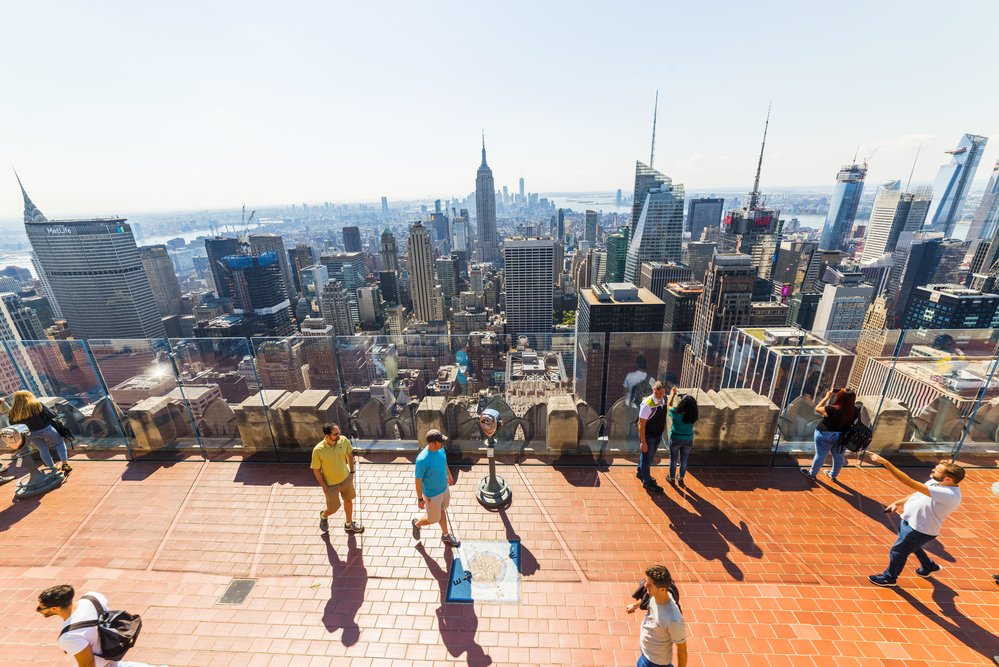
Rainbow Room
For a taste of old New York glamour, the Rainbow Room stands out. This legendary restaurant and event space on the 65th floor of 30 Rock has been hosting distinguished guests since 1934. Its revolving dance floor and Art Deco design transport visitors to a bygone era.
NBC Studios and The Tonight Show
Rockefeller Center is also famous for being the home of NBC Studios. Numerous popular shows are taped here, including Saturday Night Live and The Tonight Show. Studio tours offer visitors a behind-the-scenes look at television production.
Art and Cultural Significance
Sculptures and Murals
Prometheus Statue
One of the most recognizable artworks in Rockefeller Center is the gilded bronze statue of Prometheus. Created by Paul Manship in 1934, it has become an iconic symbol of the complex.
Atlas Statue
Another famous sculpture is Lee Lawrie’s Atlas, installed in 1937. This bronze figure of the mythical Titan bearing the weight of the celestial spheres stands in front of the International Building, serving as a powerful symbol of strength and endurance.
American Progress Mural
Inside the lobby of 30 Rock, visitors can admire the impressive American Progress mural by Josep Maria Sert. This massive artwork depicts the development of America through allegorical figures and scenes.
Controversy: Diego Rivera’s Man at the Crossroads
Rockefeller Center | What Makes It Famous? Even its controversies have become part of its storied history. In 1932, Mexican artist Diego Rivera was commissioned to paint a mural for the lobby of 30 Rock. However, his inclusion of a portrait of Vladimir Lenin caused controversy, and the mural was ultimately destroyed before completion.
Entertainment and Events
Radio City Christmas Spectacular and The Rockettes
The Radio City Christmas Spectacular and its famous Rockettes have been a holiday tradition since 1933. This show, featuring high-kicking dancers and elaborate sets, continues to captivate audiences.
Concerts and Performances
Throughout the year, Rockefeller Center hosts a variety of concerts and performances. From the summer concert series on the plaza to special events in Radio City Music Hall, the complex is a hub of entertainment.
Television and Film Appearances
The Rockefeller Centers’ frequent appearances in movies and TV shows have certainly cemented its place in pop culture. From “Miracle on 34th Street” to “30 Rock,” this iconic complex has been featured in numerous productions.
Commercial Success
Office Spaces and Corporate Tenants
Rockefeller Center functions as a major commercial hub. Its office spaces house some of the world’s largest corporations, including NBCUniversal and Deloitte. The complex’s prime location and prestigious address make it a coveted spot for businesses.
Retail Shops and Restaurants
The retail spaces at Rockefeller Center offer a diverse shopping experience. From high-end boutiques to popular chain stores, the complex caters to a wide range of consumers. A variety of dining options, from quick-service eateries to fine dining establishments, are also available.
Economic Impact on New York City
Rockefeller Center’s economic impact on New York City is substantial. It provides thousands of jobs, attracts millions of tourists annually, and generates significant tax revenue for the city.
Historical Designations and Preservation
National Historic Landmark Status
In recognition of its historical and cultural significance, Rockefeller Center was designated a National Historic Landmark in 1987. This status ensures the preservation of this architectural gem for future generations.
New York City Landmark Designation
The New York City Landmarks Preservation Commission designated Rockefeller Center a city landmark in 1985. This provides additional protection and recognition of its importance to the city’s heritage.
Renovation and Modernization Efforts
Despite its historical status, Rockefeller Center continues to evolve. Ongoing renovation and modernization efforts ensure that the complex remains relevant and functional in the 21st century, while still preserving its historic character.
Rockefeller Center’s Influence and Legacy
Impact on Urban Development and Architecture
Rockefeller Center | What Makes It Famous? Its innovative approach to urban planning has left a lasting mark. The complex has inspired similar developments worldwide, showcasing how large-scale urban projects can successfully integrate commercial, cultural, and public spaces.
Cultural Icon and Symbol of New York City
Over the years, Rockefeller Center has evolved into more than just a group of buildings. It has become a symbol of New York City itself, representing the city’s resilience, ambition, and cultural vibrancy.
Inspiration for Other Complexes Worldwide
The success of Rockefeller Center has inspired similar developments globally. From the Embarcadero Center in San Francisco to Roppongi Hills in Tokyo, its influence can be seen in urban centers around the world.
Conclusion
Rockefeller Center | What Makes It Famous? As this exploration has shown, its fame stems from a combination of factors. The stunning Art Deco architecture, innovative urban planning, iconic public spaces, and world-famous attractions all contribute to its renown. Its rich history, cultural significance, commercial success, and economic impact further cement its importance.
Rockefeller Center embodies the spirit of New York City, serving as a place where art, commerce, entertainment, and public life converge in a uniquely American way. It stands as a testament to human ambition and resilience, rising from the depths of the Great Depression to become one of the most recognizable landmarks in the world.
As Rockefeller Center continues to evolve and adapt, it remains a vital part of New York City’s landscape and a source of fascination for people around the world. Its enduring fame is a testament to its multifaceted nature and its ability to remain relevant through changing times.


